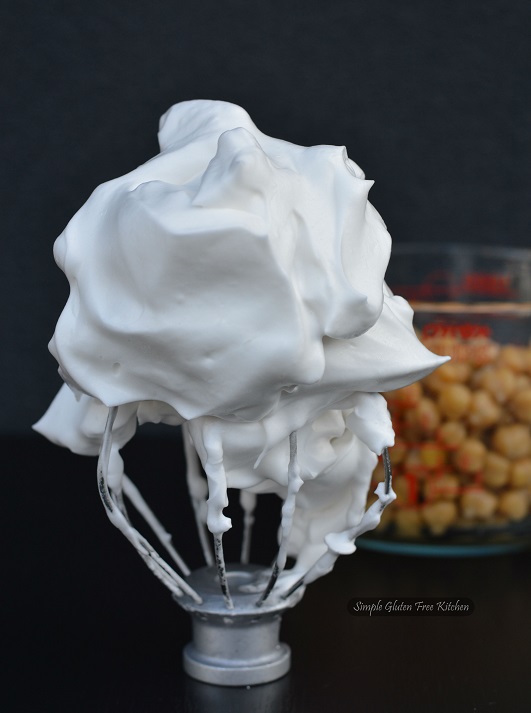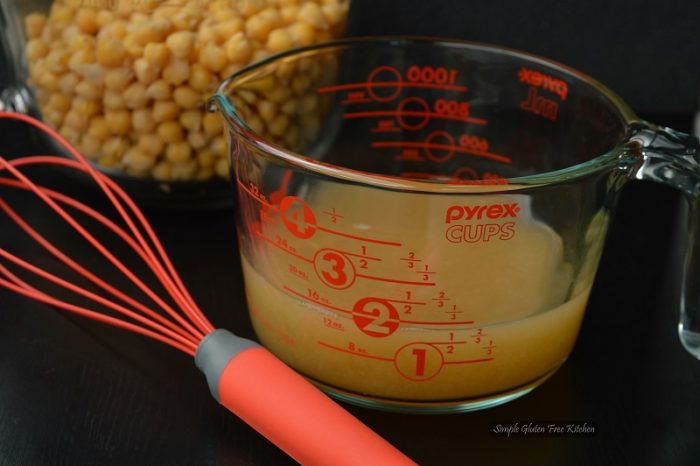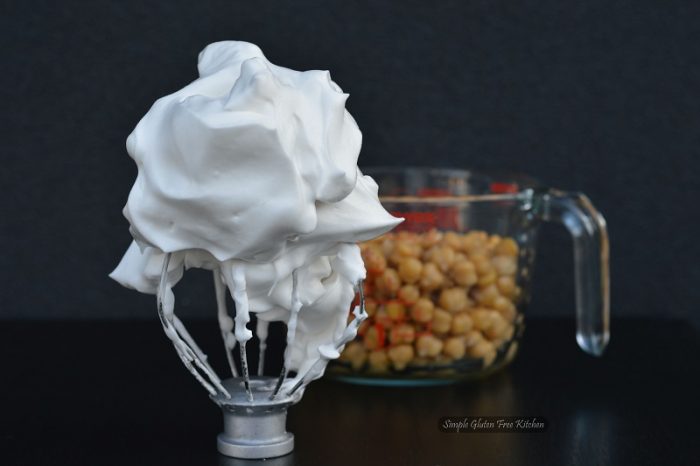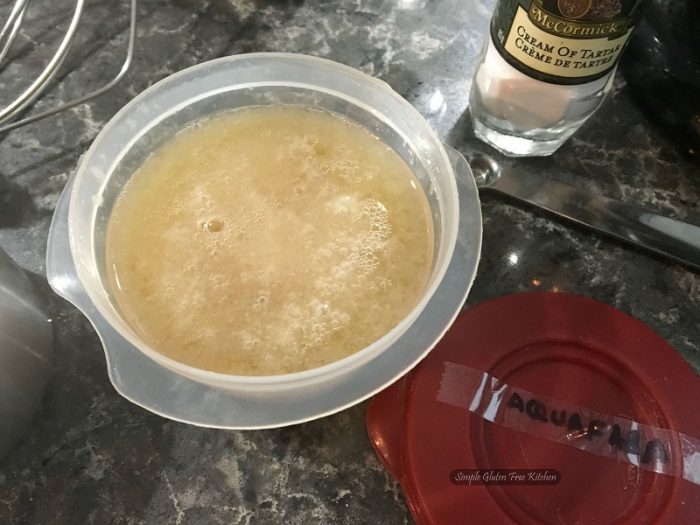I don’t know if you have heard of Aquafaba or not, but it has become the most miraculous ingredient of the food industry in last few years. It also has its name entered in the Merriam webster’s Dictionary and the official Scrabble dictionary.
So, what is aquafaba?
Aquafaba is the name for the water in which pulses (lentils, beans, and peas) has been cooked or stored. These pulses contain water-soluble proteins and relatively high amount of carbohydrates, primarily starch. When these pulses are cooked, the starches absorb water, swell and eventually leaches out into the water. This results in the viscous and gelatinous liquid very similar to egg whites, known as aquafaba.

The name “aquafaba” was coined by U.S. software engineer Goose Wohlt, based on the Latin words “water” and “bean” after he discovered that aquafaba behaves a lot like eggs. It can emulsify, foam, bind, gelatinize, and thicken. While the word aquafaba is a blanket term for the liquid that results from cooking all types of pulses, aquafaba derived from chickpeas has been found to work best in recipes. Due to its lack of color and neutral flavor chickpea aquafaba can be used in all egg like things.
I have been wanting to write this post ever since I made the aquafaba sponge cake a year ago but somehow I never got around to take a picture whenever I saved the bean water. I use white chickpeas in many recipes but save the liquid only when I need to make chickpea salad or patties, (post the recipe soon) other times I use the chickpea water as stock for curry or soup.

How to obtain aquafaba?
The easiest way to get aquafaba is to buy canned chickpeas and take the liquid, minus the beans. But most beans come in cans lined with bisphenol A (called BPA), which interferes with our body’s endocrine system. While some companies have stopped using BPA in their can liners but such canned foods are rare and are not available everywhere. Hence, getting aquafaba from dried beans is the best option. The process takes some time but with a little bit of planning, you can have both the convenience of canned beans and the benefits of aquafaba. After cooking the chickpeas, there is no residual beany flavor or smell. You’ll just have to try it to believe it. Give it a go, and keep things healthy.

To start off you need to soak the chickpeas for at least eight hours or overnight. I like to soak mine in the morning and cook them in the evening. Soaking has been practiced by our ancestors in nearly every culture. While draining water from soaked beans is personal preference, I don’t do it. I remember my mother always drained away the water. She had excessive intestinal gas problems so draining off the soaking water and adding some spices minimized the effect of flatulence-causing compounds. The amount of gas produced depends on your intestinal health, the particular bacteria in your intestine, and the type of beans. For some people, most beans have little effect on their digestive system, while others like my mother greatly feel the effects. If you are not one of like my mother cook in soaking water. I have found that it gives you the exact viscosity of canned chickpeas. And, cook it up in bulk as both the chickpeas and aquafaba freeze really well.

How to use aquafaba in a recipe?
The legume-y liquid can be used in recipes from savory to sweet and raw to cooked. Generally, 1 tablespoon of aquafaba equate to one yolk, 2 tablespoons for one egg white and 3 tablespoons for a whole egg, providing it is the right consistency. Aquafaba can be used as-is, chiefly as a binder but most often it is whipped. Because aquafaba takes time and needs to be whipped fiercely to achieve peaks, a stand mixer with a balloon whisk attachment, or a hand-held mixer or egg beater are the best tools for the job. Adding some cream of tartar or vinegar or lemon juice to the aquafaba before you start whipping helps the liquid foam and fluff up better with a more stabilized end result.
If you are interested in learning the wonderful world of aquafaba then visit this community of chefs and food enthusiasts on Facebook- Aquafaba (Vegan Meringues Hits and Misses) I’ve been hooked on to this Group and amazed by all the miraculous things the members have been making with chickpea liquid foam. I’m also hoping to spend some time in the kitchen experimenting with aquafaba and post some of the recipes!
Until now I’ve attempted making mousse, cake, meringue drops and was really pleased with the result.

A wonder ingredient for all things egg safe and vegan.
Ingredients
- 1 lb white chickpeas
- 6 cups (approx.) water
Instructions
- Sort through the chickpeas to make sure there are no pebbles or clumps of dirt, removing any that you find.
- Rinse chickpeas really well and place in a cooking pot. Cover completely with cold water. Allow to soak for 8 -10 hours.
- In the evening, check the level of the soaking water. If the chickpeas aren’t completely submerged, add some more water so the chickpeas have about 2 inches of water above them.
- If using the stovetop method, place the pot over high heat and bring to a boil then reduce the heat and simmer for 30 -40 minutes, or until the beans reach desired softness. You may need to add a bit more water during this process.
- If using Instant pot, add the chickpeas and the soaking water to the insert of a 6 or 8 quartz Instant Pot.
- Lock the lid. Place the pressure release handle (vent) in the “Sealing” position. Set the Instant Pot to High Pressure, and adjust the timer to 12-13 minutes.
- When the cooking time is up, turn off the Instant Pot and allow the pressure to come down naturally before unlocking the lid.
- Once the chickpeas are cooked, allow them to sit in the pot.
- Once fully cooled, cover the bowl and store in the fridge overnight. This step allows the water to become a little gelatinous, mimicking the egg white texture.
- Next day, use a strainer or fine sieve to strain the liquid from chickpeas to a large liquid measuring cup. The liquid is aquafaba.
- If the aquafaba is a bit thin, you can reheat it in the microwave or saucepan to a simmer in order to reduce it to the viscosity of an egg white.
- Use the cooled aquafaba right away or store it in the refrigerator in an airtight container, or pour it into ice trays or small containers and freeze.
- Even though aquafaba looks light brownish in color, it whips up to a pure white, just like egg whites do.
Notes
When beans boil, a foam forms on the top of the cooking liquid. This foam is water-soluble protein released from the beans and it will be absorbed back into the bean cooking liquid. It is not necessary to remove the foam but if you wish you can.

Easyfoodsmith
I started using aquafaba recently and we are loving it.
Blackswan
I’ve not heard of this & it looks interesting. xoxo
angiesrecipes
Awesome! Love those meringue drops.
amrita
Today I have learned something new… very interesting
Adina
Great post, I’ve read every word of it. I’ve heard of aquafaba before, but never had the trust to actually try it! Although I cook my own chickpeas (or beans) all the times and use their water to make soups or to add to spreads. I would be curious to use it in cakes or muffins instead of eggs, see how that works.